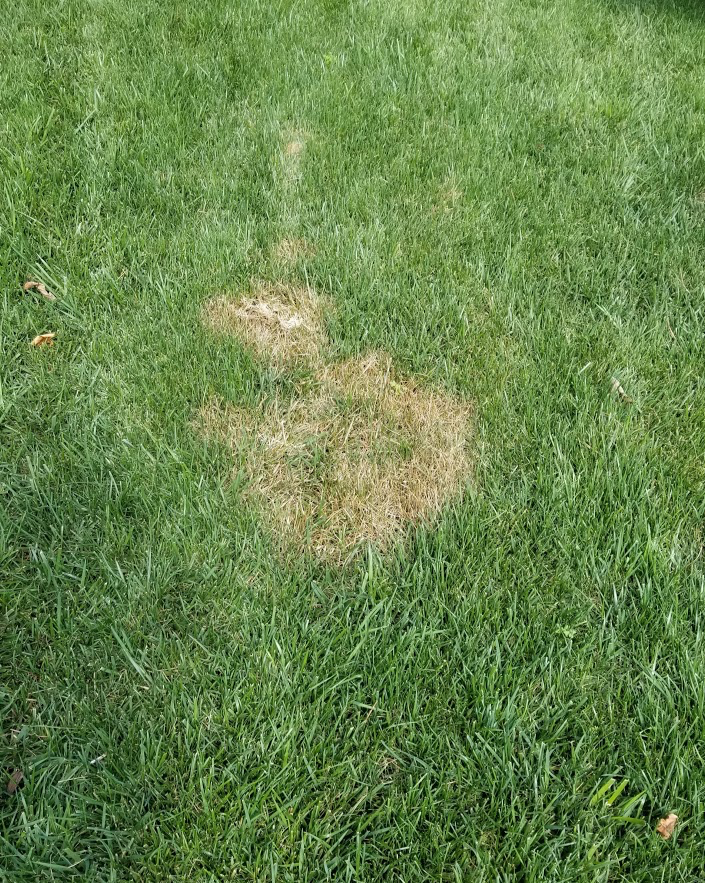Brown Patch Is Here
go.ncsu.edu/readext?707495
en Español / em Português
El inglés es el idioma de control de esta página. En la medida en que haya algún conflicto entre la traducción al inglés y la traducción, el inglés prevalece.
Al hacer clic en el enlace de traducción se activa un servicio de traducción gratuito para convertir la página al español. Al igual que con cualquier traducción por Internet, la conversión no es sensible al contexto y puede que no traduzca el texto en su significado original. NC State Extension no garantiza la exactitud del texto traducido. Por favor, tenga en cuenta que algunas aplicaciones y/o servicios pueden no funcionar como se espera cuando se traducen.
Português
Inglês é o idioma de controle desta página. Na medida que haja algum conflito entre o texto original em Inglês e a tradução, o Inglês prevalece.
Ao clicar no link de tradução, um serviço gratuito de tradução será ativado para converter a página para o Português. Como em qualquer tradução pela internet, a conversão não é sensivel ao contexto e pode não ocorrer a tradução para o significado orginal. O serviço de Extensão da Carolina do Norte (NC State Extension) não garante a exatidão do texto traduzido. Por favor, observe que algumas funções ou serviços podem não funcionar como esperado após a tradução.
English
English is the controlling language of this page. To the extent there is any conflict between the English text and the translation, English controls.
Clicking on the translation link activates a free translation service to convert the page to Spanish. As with any Internet translation, the conversion is not context-sensitive and may not translate the text to its original meaning. NC State Extension does not guarantee the accuracy of the translated text. Please note that some applications and/or services may not function as expected when translated.
Collapse ▲The unseasonably cool weather and abundant rains in April and May provided perfect growing conditions for fescue. Unfortunately, once warmer temperatures arrive so do foliar disease problems. Large brown circles are beginning to taint cool-season fescue lawns. Brown patch is here.

Brown patch symptoms include small circular brown patches, about a foot in diameter, and can often “melt” together.
Brown patch is a common turf disease caused by a soil borne fungus Rhizoctonia solani. Recent weather patterns of rain and heavy cloud cover along with rising temperatures provides the perfect environment for this foliar disease. Early symptoms are small circular brown patches of turf a foot in diameter. Small patches often melt together and may engulf an entire area of a lawn.
Turf fertilized with high rates of nitrogen during late spring or early summer makes lush fescue very susceptible to the disease. Tall fescue grown in shaded lawns with restricted air movement is more susceptible to the foliar disease because of higher humidity and more succulent foliar growth.
Tall fescue should not be fertilized after the first of May, unless you are using ultra-low rates with iron for a color effect. The recommended amount of nitrogen on tall fescue per year is 3-4 pounds per 1,000 square feet.
Seeding rates of more than 6 pounds of seeds per 1,000 square foot, often produces small, crowded seedlings with poor root systems that are also susceptible to brown patch.
Over-seed with different fescue cultivars helps reduce the rapid spread of the disease. Monocultures of fescue cultivars can be completely engulfed by the fungus.
Brown patch infested lawns may need soil tested to determine if low pH is a contributing factor. A pH below 6.0 aggravates the spread of brown patch. Now is the time to have soils tested if fall renovation is in your plans. Soils must have a proper soil pH of 6.0-6.5 to achieve maximum health and growth to ward off the fungus. Turf and ornamental fungicides are necessary to control the fungus. There are some user-friendly granular fungicides available that may help.
According to plant pathologists at NC State University, the most important step of controlling brown patch is infrequent irrigation and regular mowing when the grass is dry. Unusually cool, wet weather over the past few weeks has made this almost impossibility, hence the rapid outbreak of the disease. Avoid irrigation in the late evening or at night. Early morning irrigation helps prevent the spread of brown patch. Lawns with a history of brown patch disease will often see annual reoccurrences. The disease can also be controlled with fungicidal treatments. It’s important to apply these treatments before the foliar disease occurs. Go to Brown Patch in Turf for more detailed information on brown patch control.
Darrell Blackwelder deblackw@ncsu.edu is the retired horticulture agent and director with the North Carolina Cooperative Extension Service in Rowan County.




